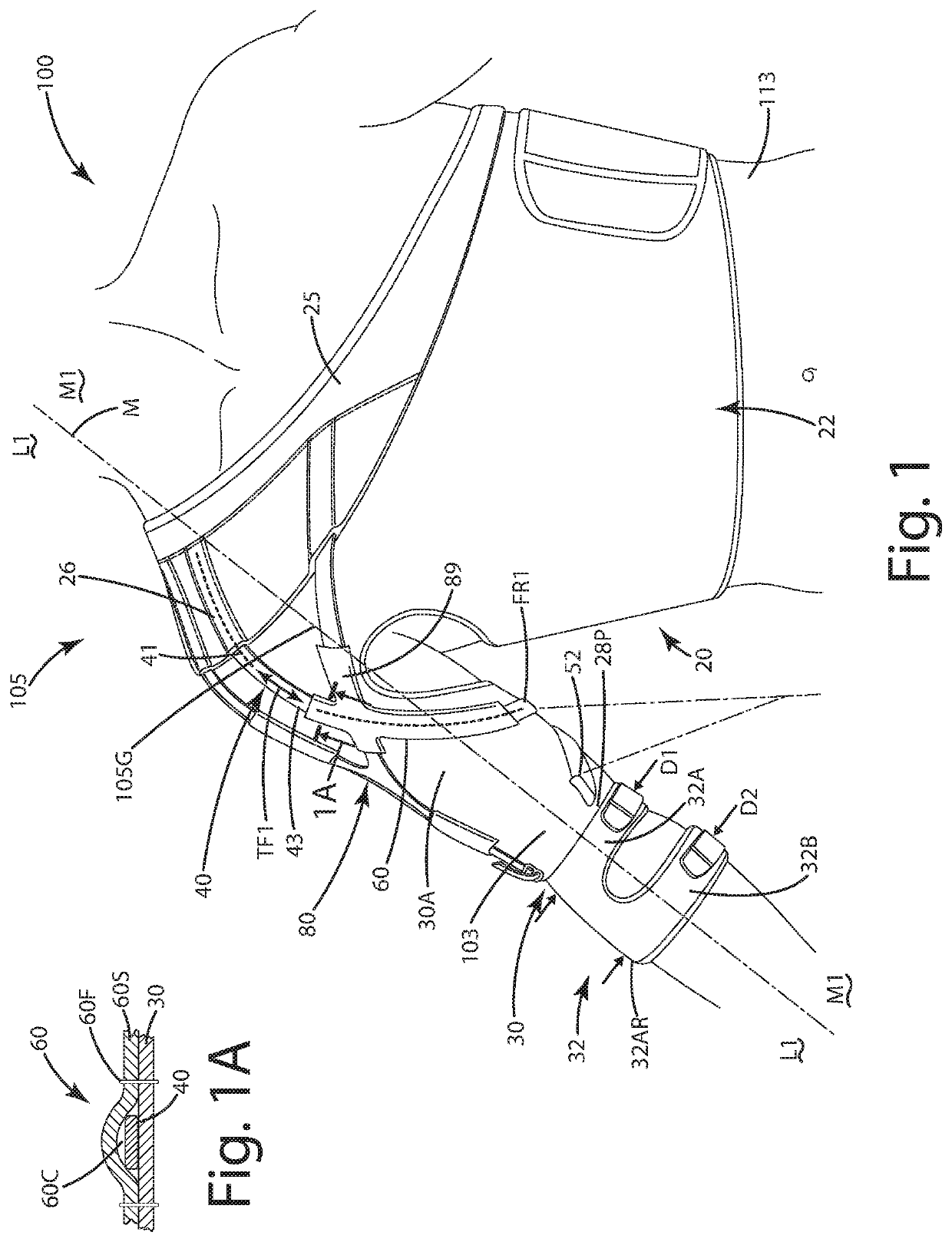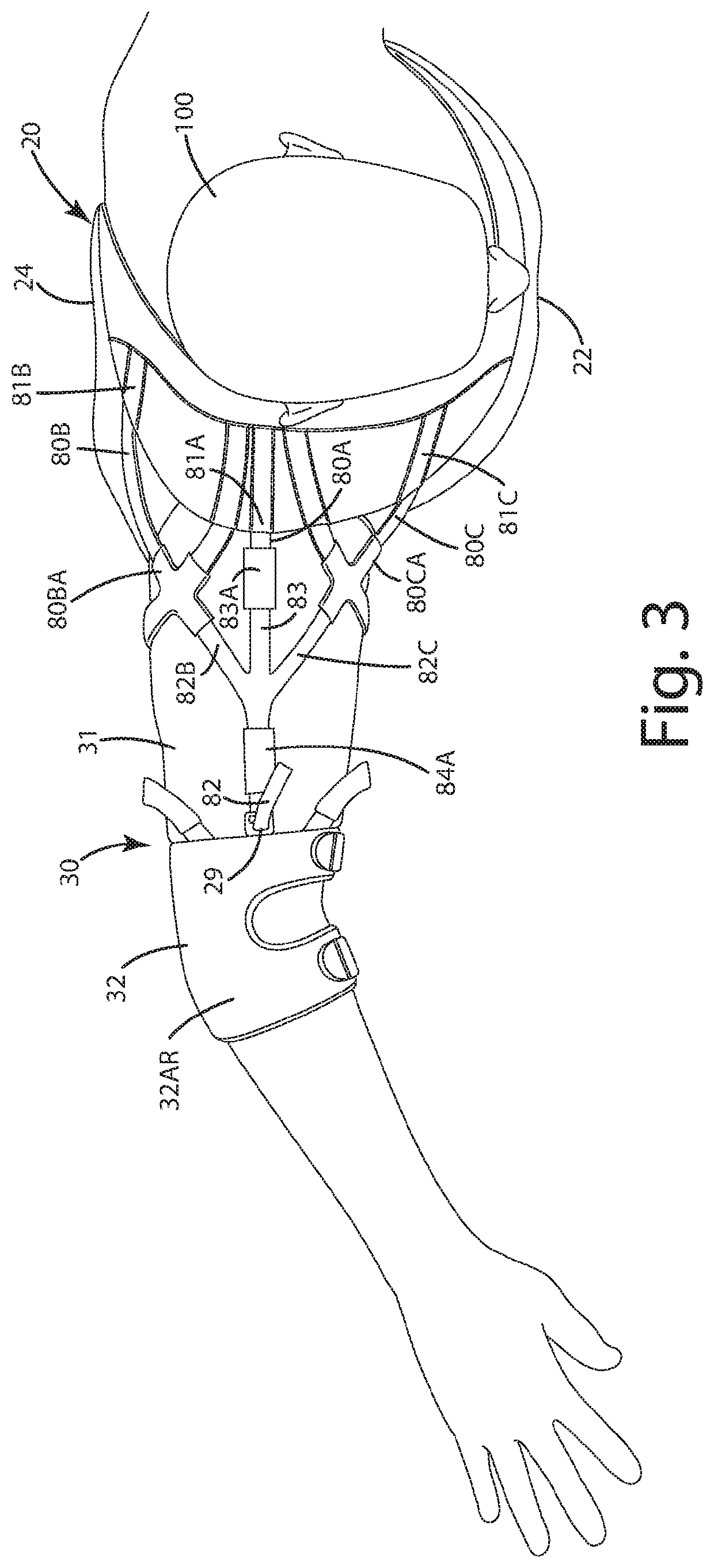Dynamic tensioning orthosis and related method of use
a technology of dynamic tensioning and orthosis, applied in the field of dynamic tensioning orthosis, can solve the problems of joint deterioration, joint immobility and pain, joint laxity, etc., and achieve the effect of preventing additional injury from joint instability
- Summary
- Abstract
- Description
- Claims
- Application Information
AI Technical Summary
Benefits of technology
Problems solved by technology
Method used
Image
Examples
Embodiment Construction
[0054]A current embodiment of the orthosis is illustrated in FIGS. 1-11, and generally designated 10. The orthosis shown in the current embodiment is in the form of a shoulder brace, configured to dynamically stabilize and support the glenohumeral joint 105G in a shoulder 105 of a wearer 100 (FIGS. 12-13). Although the orthosis 10 is shown in this application, it is well-suited for addressing support and instability issues in a variety of different joints, for example, the elbow, wrist, hip, knee and ankle joints with appropriate modifications to the orthosis to address the same.
[0055]Generally, the orthosis 10 includes a base 20 including a sleeve 30. The base 20 can secure the orthosis to the torso 113, while the sleeve can secure the orthosis to the arm and over the shoulder 105. An anterior strap 40 and a posterior strap 50 are secured to the base, and wrap around the arm as further described below. The anterior strap 40 is guided along a first fixed route or pathway FR1 by an a...
PUM
 Login to view more
Login to view more Abstract
Description
Claims
Application Information
 Login to view more
Login to view more - R&D Engineer
- R&D Manager
- IP Professional
- Industry Leading Data Capabilities
- Powerful AI technology
- Patent DNA Extraction
Browse by: Latest US Patents, China's latest patents, Technical Efficacy Thesaurus, Application Domain, Technology Topic.
© 2024 PatSnap. All rights reserved.Legal|Privacy policy|Modern Slavery Act Transparency Statement|Sitemap



